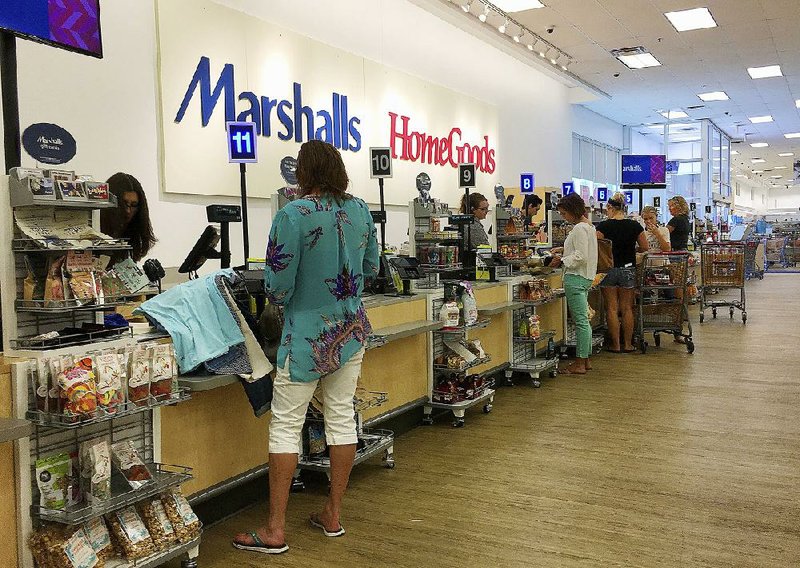WASHINGTON -- Consumer spending rose 0.4 percent in April after a 0.3 percent rise in March, the Commerce Department said Tuesday. It was the best showing since December. Incomes also rose 0.4 percent, double the 0.2 percent March increase.
Consumer spending, which accounts for 70 percent of economic activity, grew at the slowest pace in seven years in the first quarter. That was a key reason the economy, as measured by the gross domestic product, expanded by just 1.2 percent at the start of the year.
Economists are hopeful GDP growth will rebound to around 3 percent in the current April-June quarter.
A key inflation gauge preferred by the Federal Reserve edged up a slight 0.2 percent in April, leaving prices rising just 1.7 percent over the past year -- the slowest 12-month gain this year and below the Fed's 2 percent target. Even with tame inflation, economists believe the Fed will raise rates for a second time this year when officials meet on June 13-14, especially if the employment report due on Friday shows job growth remaining strong.
"After a two-month hiatus, consumers were out in force this spring, paving the way for a rebound in economic growth," said Sal Guatieri, senior economist at BMO Capital Markets. "The rebound in consumer spending will give the Fed confidence to hike rates in June while low inflation will weigh toward a continued gradual pace of policy normalization."
The Fed raised its policy rate in March and many analysts are looking for two more rate increases this year, in June and September.
"Fed officials can continue with their gradual pace of rate hikes as the economy remains on course for stronger growth this quarter and throughout the rest of the year," said Chris Rupkey, chief financial economist at Mitsubishi UFG Union Bank in New York.
With spending and incomes both up 0.4 percent in April, the saving rate was unchanged for a third month at 5.3 percent of after-tax income. It had been 5 percent in January.
The rise in spending was led by a 0.9 percent rise in purchases of long-lasting durable goods, reflecting a rebound in demand for autos after a weak first quarter. Spending on non-durable goods such as clothing was up a solid 0.6 percent, and spending on services such as utilities grew a moderate 0.3 percent.
The 1.2 percent GDP growth rate in the first quarter fell below the targets set by President Donald Trump. During the campaign, Trump blasted the Obama administration's economic policies, saying they had contributed to the weakest recovery in the post-World War II period. He promised to double growth from an anemic 2 percent annual rate to above 4 percent with his economic program featuring tax cuts, deregulation and tougher enforcement of trade rules.
However, so far, Trump's economic program has made little headway in Congress. He put forward last week a $4.1 trillion budget for 2018, but it has attracted criticism from both Democrats and Republicans for its sharp cuts in the government's anti-poverty programs.
U.S. consumers were slightly less confident in May for the second straight month, but they remain bullish by historical measures.
The Conference Board, a business research group, said Tuesday that its consumer confidence index fell to 117.9 from a revised 119.4 in April. The index hit 124.9 in March, its highest mark in 16 years.
The index that measures consumers' feelings about the current economic situation increased slightly, while the index measuring consumers' sentiment about the future was down more. Still, the expectations index is more than 30 percent higher than it was at this time one year ago.
"The small decline in the Conference Board measure of U.S. consumer confidence in May is nothing to be worried about because it is falling from a very high level," said Michael Pearce, an economist for Capital Economics. "Overall, the data released this morning suggest that the U.S. consumers remain upbeat and willing to spend."
Consumers' outlook for the job market was also mixed. The number of people surveyed who expected more jobs in the coming months declined, but so did the number of people expecting fewer jobs.
Economists closely monitor the mood of consumers because their spending makes up about 70 percent of U.S. economic activity.
Information for this article was contributed by Martin Crutsinger and Matt Ott of The Associated Press and Jim Puzzanghera of the Los Angeles Times.
Business on 05/31/2017

